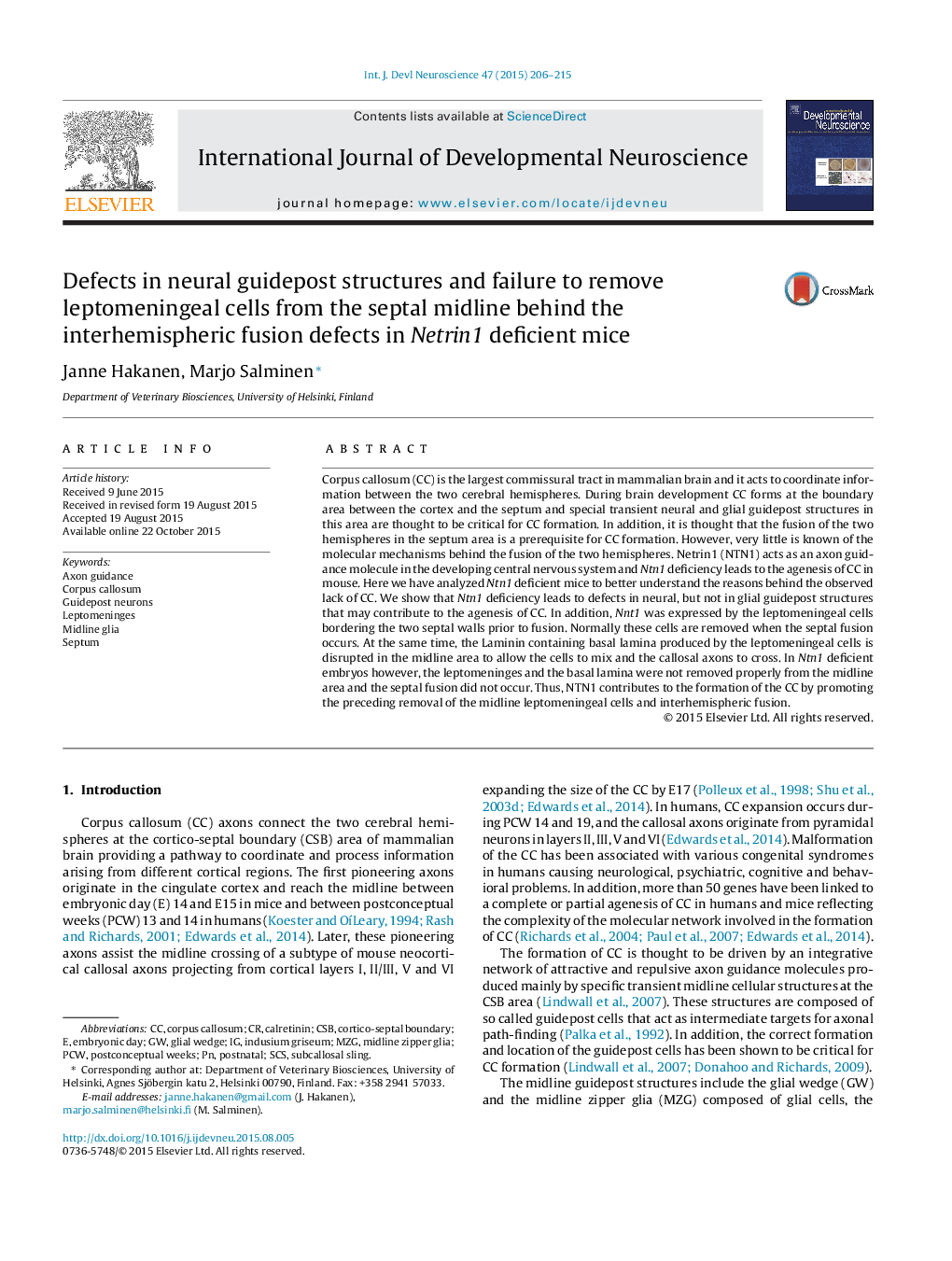| کد مقاله | کد نشریه | سال انتشار | مقاله انگلیسی | نسخه تمام متن |
|---|---|---|---|---|
| 2785651 | 1568383 | 2015 | 10 صفحه PDF | دانلود رایگان |
• Midline glial structures are present in Ntn1 deficient mice.
• Guidepost neurons are misplaced in Ntn1 deficient mice.
• Nnt1 is expressed by leptomeningeal cells surrounding the septal walls.
• The leptomeningeal cells are not removed from the midline of Ntn1 deficient mice.
• The basal lamina is not disrupted in the midline of Ntn1 deficient mice.
Corpus callosum (CC) is the largest commissural tract in mammalian brain and it acts to coordinate information between the two cerebral hemispheres. During brain development CC forms at the boundary area between the cortex and the septum and special transient neural and glial guidepost structures in this area are thought to be critical for CC formation. In addition, it is thought that the fusion of the two hemispheres in the septum area is a prerequisite for CC formation. However, very little is known of the molecular mechanisms behind the fusion of the two hemispheres. Netrin1 (NTN1) acts as an axon guidance molecule in the developing central nervous system and Ntn1 deficiency leads to the agenesis of CC in mouse. Here we have analyzed Ntn1 deficient mice to better understand the reasons behind the observed lack of CC. We show that Ntn1 deficiency leads to defects in neural, but not in glial guidepost structures that may contribute to the agenesis of CC. In addition, Nnt1 was expressed by the leptomeningeal cells bordering the two septal walls prior to fusion. Normally these cells are removed when the septal fusion occurs. At the same time, the Laminin containing basal lamina produced by the leptomeningeal cells is disrupted in the midline area to allow the cells to mix and the callosal axons to cross. In Ntn1 deficient embryos however, the leptomeninges and the basal lamina were not removed properly from the midline area and the septal fusion did not occur. Thus, NTN1 contributes to the formation of the CC by promoting the preceding removal of the midline leptomeningeal cells and interhemispheric fusion.
Figure optionsDownload high-quality image (262 K)Download as PowerPoint slide
Journal: International Journal of Developmental Neuroscience - Volume 47, Part B, December 2015, Pages 206–215
